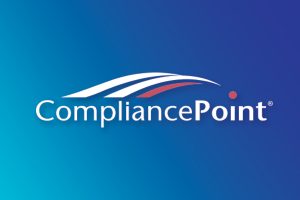What is FedRAMP?
The Federal Risk and Authorization Management Program (FedRAMP) was established in 2011 to provide a risk-based approach to adopting and using cloud services by the federal government. In 2022, the FedRAMP Authorization Act was signed as part of the FY23 National Defense Authorization Act (NDAA). The Act codifies the FedRAMP program as the authoritative standardized approach to security assessment and authorization for cloud computing products and services that process unclassified federal information. FedRAMP is the cloud arm of the Federal Information Security Management Act (FISMA).
Cloud Service Providers (CSP) that want to make Cloud Service Offerings (CSO) available to federal agencies must have a FedRAMP designation to be listed on the FedRAMP marketplace.
FedRAMP uses the NIST SP 800-53 security controls and includes parameters and guidance above the NIST baseline that address the unique elements of cloud computing. The NIST SP 800-53 control families are:
- Access Control
- Awareness and Training
- Audit and Accountability
- Assessment, Authorization, and Monitoring
- Configuration Management
- Contingency Planning
- Identification and Authentication
- Incident Response
- Maintenance
- Media Protection
- Physical and Environmental Protection
- Planning
- Program Management
- Personnel Security
- Personally Identifiable Information (PII) Processing and Transparency
- Risk Assessment
- System and Services Acquisition
- System and Communications Protection
- System and Information Integrity
- Supply Chain Risk Management
FedRAMP Authorization Process
The FedRAMP Program Management Office (PMO) defines three official designations for CSOs:
FedRAMP Ready
A designation provided to CSPs that indicates that a FedRAMP-recognized 3PAO attests to a product’s security capabilities and that a Readiness Assessment Report (RAR) has been reviewed and deemed acceptable by the FedRAMP PMO.
FedRAMP In Process
A designation provided to CSPs that are actively working toward a FedRAMP Authorization.
FedRAMP Authorized
A designation provided to CSPs that have successfully completed the FedRAMP Authorization process.
FedRAMP requires organizations to have assessments conducted by an approved Third Party Assessment Organization (3PAO) to achieve their security status.
Authorization Options
In 2024, FedRAMP discontinued the JAB Authorization option, leaving just the Agency Authorization.
Agency Authorization
In the Agency Authorization path, CSPs need to find a federal agency to sponsor their CSO as they strive to achieve an Authority to Operate (ATO).
Pursuing the FedRAMP Ready designation is recommended, but not required for the Agency Authorization path. To achieve this designation, CSPs must work with a 3PAO to complete a Readiness Assessment of its service offering. The Readiness Assessment Report (RAR) documents the CSP's capability to meet federal security requirements.
During the Pre-Authorization step, CSPs need to formalize their agency partnership and prepare to undergo the authorization process. Organizations need to make any necessary technical and procedural adjustments to address federal security requirements and prepare the security deliverables required for authorization.
By this stage, CSPs should:
- Have a system that is fully built and functional
- Have a leadership team that is committed and fully on board with the FedRAMP process
- Engage with FedRAMP through the intake process by completing a CSP Information Form
- Determine the security categorization of the data that will be placed within the system using the FedRAMP Federal Information Processing Standards (FIPS) 199 Categorization Template (located in Section 15 of the System Security Plan (SSP) template, located on the Documents & Templates page) along with the guidance of FIPS 199 Pub 199 and NIST Special Publication 800-60 Volume 2 Revision 1 to correctly categorize their system based on the types of information processed, stored, and transmitted on its systems.
CSPs and their chosen agency will then have a kickoff meeting to discuss:
- The background and functionality of the cloud service
- The technical security of the cloud service, including the system architecture, the authorization boundary, data flows, and core security capabilities
- Customer responsible controls that must be implemented and tested by the Agency
- Compliance gaps and remediation plans
- A work breakdown structure, milestones, and next steps
The 3PAO will then perform a full security assessment of the system. Before the assessment, the CSP’s System Security Plan (SSP) needs to be completed, reviewed, and approved by the agency customer. Also, the Security Assessment Plan (SAP) should be developed by the CSP’s 3PAO with their authorizing agency’s input.
During this step, the 3PAO tests the CSP’s system and develops a Security Assessment Report (SAR) which details their findings and includes a recommendation for FedRAMP Authorization.
The CSP will then develop a Plan of Action and Milestones (POA&M) based on the SAR findings and include input from the 3PAO, which outlines a plan for addressing the findings from testing.
CSPs will then move to the Agency Authorization Process, where the agency conducts a security authorization package review, which may include a SAR debrief with the FedRAMP PMO. The results of the review could require remediation by the CSP. The agency will implement, test, and document customer responsible controls during this phase. Finally, the agency performs a risk analysis, accepts risk, and issues an ATO. This decision is based on the agency’s risk tolerance. Once an agency provides an ATO letter for the use of the CSO, the following actions take place to close out this step:
- The CSP uploads the Authorization Package Checklist and the complete security package (SSP and attachments, POA&M, and Agency ATO letter), with the exception of the security assessment material, to FedRAMP’s secure repository.
- The 3PAO uploads all security assessment material (SAP, SAR, and attachments) associated with the CSO security package to FedRAMP’s secure repository.
The FedRAMP PMO reviews the security assessment materials for inclusion into the FedRAMP Marketplace. The FedRAMP Marketplace listing will be updated to reflect FedRAMP Authorized status. The CSO security package will be made available to agency information security personnel, to issue subsequent ATOs, by completing the FedRAMP Package Access Request Form, which can be found here.
To meet continuous monitoring requirements, Agency Authorization CSPs must provide periodic security deliverables (vulnerability scans, updated POA&M, annual security assessments, incident reports, significant change requests, etc.) to all agency customers. Further details can be found in the Continuous Monitoring Strategy Guide.
FedRAMP 20x
In March 2025, FedRAMP announced the launch of FedRAMP 20x, an initiative for easier and cheaper automated authorization. FedRAMP claims proposed changes will reduce the average time for CSPs to obtain authorization from years to weeks through automation and modular compliance while increasing the overall security posture of federal cloud solutions through applied security.
FedRAMP 20x lays out the following five goals for a revised assessment process:
- Make it simple to automate the application and validation of FedRAMP security requirements
- Leverage existing industry investments in security by inheriting best-in-class commercial security frameworks
- Continuously monitor security decisions using a simple, hands-off approach
- Build trust between industry and federal agencies by leaning into the direct business relationships between providers and customers
- Enable rapid, continuous innovation without artificial checkpoints that halt progress
The Benefits of FedRAMP Authorization
Federal agencies are only allowed to use FedRAMP authorized CSOs. Securing authorization opens significant potential revenue streams, such as the Department of Defense.
Implementing the security controls required for FedRAMP authorization will give your organization more confidence in the security of your systems and services.
How We Can Help
CompliancePoint’s team of cybersecurity experts offers decades of experience your organization can leverage. We can help design and implement controls that will meet all FedRAMP requirements. Once implemented, we can help manage your security program on an ongoing basis to ensure continuous compliance.
What is FedRAMP
The Federal Risk and Authorization Management Program (FedRAMP) was established in 2011 to provide a risk-based approach to adopting and using cloud services by the federal government. In 2022, the FedRAMP Authorization Act was signed as part of the FY23 National Defense Authorization Act (NDAA). The Act codifies the FedRAMP program as the authoritative standardized approach to security assessment and authorization for cloud computing products and services that process unclassified federal information. FedRAMP is the cloud arm of the Federal Information Security Management Act (FISMA).
Cloud Service Providers (CSP) that want to make Cloud Service Offerings (CSO) available to federal agencies must have a FedRAMP designation to be listed on the FedRAMP marketplace.
FedRAMP uses the NIST SP 800-53 security controls and includes parameters and guidance above the NIST baseline that address the unique elements of cloud computing. The NIST SP 800-53 control families are:
- Access Control
- Awareness and Training
- Audit and Accountability
- Assessment, Authorization, and Monitoring
- Configuration Management
- Contingency Planning
- Identification and Authentication
- Incident Response
- Maintenance
- Media Protection
- Physical and Environmental Protection
- Planning
- Program Management
- Personnel Security
- Personally Identifiable Information (PII) Processing and Transparency
- Risk Assessment
- System and Services Acquisition
- System and Communications Protection
- System and Information Integrity
- Supply Chain Risk Management
FedRAMP Authorization Process
The FedRAMP Program Management Office (PMO) defines three official designations for CSOs:
FedRAMP Ready
A designation provided to CSPs that indicates that a FedRAMP-recognized 3PAO attests to a product’s security capabilities and that a Readiness Assessment Report (RAR) has been reviewed and deemed acceptable by the FedRAMP PMO.
FedRAMP In Process
A designation provided to CSPs that are actively working toward a FedRAMP Authorization.
FedRAMP Authorized
A designation provided to CSPs that have successfully completed the FedRAMP Authorization process.
FedRAMP requires organizations to have assessments conducted by an approved Third Party Assessment Organization (3PAO) to achieve their security status.
Authorization Options
In 2024, FedRAMP discontinued the JAB Authorization option, leaving just the Agency Authorization.
Agency Authorization
In the Agency Authorization path, CSPs need to find a federal agency to sponsor their CSO as they strive to achieve an Authority to Operate (ATO).
Pursuing the FedRAMP Ready designation is recommended, but not required for the Agency Authorization path. To achieve this designation, CSPs must work with a 3PAO to complete a Readiness Assessment of its service offering. The Readiness Assessment Report (RAR) documents the CSP's capability to meet federal security requirements.
During the Pre-Authorization step, CSPs need to formalize their agency partnership and prepare to undergo the authorization process. Organizations need to make any necessary technical and procedural adjustments to address federal security requirements and prepare the security deliverables required for authorization.
By this stage, CSPs should:
- Have a system that is fully built and functional
- Have a leadership team that is committed and fully on board with the FedRAMP process
- Engage with FedRAMP through the intake process by completing a CSP Information Form
- Determine the security categorization of the data that will be placed within the system using the FedRAMP Federal Information Processing Standards (FIPS) 199 Categorization Template (located in Section 15 of the System Security Plan (SSP) template, located on the Documents & Templates page) along with the guidance of FIPS 199 Pub 199 and NIST Special Publication 800-60 Volume 2 Revision 1 to correctly categorize their system based on the types of information processed, stored, and transmitted on its systems.
CSPs and their chosen agency will then have a kickoff meeting to discuss:
- The background and functionality of the cloud service
- The technical security of the cloud service, including the system architecture, the authorization boundary, data flows, and core security capabilities
- Customer responsible controls that must be implemented and tested by the Agency
- Compliance gaps and remediation plans
- A work breakdown structure, milestones, and next steps
The 3PAO will then perform a full security assessment of the system. Before the assessment, the CSP’s System Security Plan (SSP) needs to be completed, reviewed, and approved by the agency customer. Also, the Security Assessment Plan (SAP) should be developed by the CSP’s 3PAO with their authorizing agency’s input.
During this step, the 3PAO tests the CSP’s system and develops a Security Assessment Report (SAR) which details their findings and includes a recommendation for FedRAMP Authorization.
The CSP will then develop a Plan of Action and Milestones (POA&M) based on the SAR findings and include input from the 3PAO, which outlines a plan for addressing the findings from testing.
CSPs will then move to the Agency Authorization Process, where the agency conducts a security authorization package review, which may include a SAR debrief with the FedRAMP PMO. The results of the review could require remediation by the CSP. The agency will implement, test, and document customer responsible controls during this phase. Finally, the agency performs a risk analysis, accepts risk, and issues an ATO. This decision is based on the agency’s risk tolerance. Once an agency provides an ATO letter for the use of the CSO, the following actions take place to close out this step:
- The CSP uploads the Authorization Package Checklist and the complete security package (SSP and attachments, POA&M, and Agency ATO letter), with the exception of the security assessment material, to FedRAMP’s secure repository.
- The 3PAO uploads all security assessment material (SAP, SAR, and attachments) associated with the CSO security package to FedRAMP’s secure repository.
The FedRAMP PMO reviews the security assessment materials for inclusion into the FedRAMP Marketplace. The FedRAMP Marketplace listing will be updated to reflect FedRAMP Authorized status. The CSO security package will be made available to agency information security personnel, to issue subsequent ATOs, by completing the FedRAMP Package Access Request Form.
To meet continuous monitoring requirements, Agency Authorization CSPs must provide periodic security deliverables (vulnerability scans, updated POA&M, annual security assessments, incident reports, significant change requests, etc.) to all agency customers. Further details can be found in the Continuous Monitoring Strategy Guide.
FedRAMP 20x
In March 2025, FedRAMP announced the launch of FedRAMP 20x, an initiative for easier and cheaper automated authorization. FedRAMP claims proposed changes will reduce the average time for CSPs to obtain authorization from years to weeks through automation and modular compliance while increasing the overall security posture of federal cloud solutions through applied security.
FedRAMP 20x lays out the following five goals for a revised assessment process:
- Make it simple to automate the application and validation of FedRAMP security requirements
- Leverage existing industry investments in security by inheriting best-in-class commercial security frameworks
- Continuously monitor security decisions using a simple, hands-off approach
- Build trust between industry and federal agencies by leaning into the direct business relationships between providers and customers
- Enable rapid, continuous innovation without artificial checkpoints that halt progress
The Benefits of FedRAMP Authorization
Federal agencies are only allowed to use FedRAMP authorized CSOs. Securing authorization opens significant potential revenue streams, such as the Department of Defense.
Implementing the security controls required for FedRAMP authorization will give your organization more confidence in the security of your systems and services.
How We Can Help
CompliancePoint’s team of cybersecurity experts offers decades of experience your organization can leverage. We can help design and implement controls that will meet all FedRAMP requirements. Once implemented, we can help manage your security program on an ongoing basis to ensure continuous compliance.
Failure to comply with relevant requirements can have a devastating impact on your organization. Don't take chances, let our experts help.
Frequently Asked Questions
FedRAMP is a security framework for cloud services. Federal agencies are only allowed to use cloud services that have a FedRAMP Authorization. The National Institute of Standards and Technology (NIST) has published a series of voluntary cybersecurity frameworks. FedRAMP is largely based on the security controls found in NIST 800-53.
To get a Cloud Service Offerings (CSO) listed on the FedRAMP marketplace, a Cloud Service Provider (CSP) must secure a FedRAMP Authorization for that offering. Federal agencies can only use cloud services that have a FedRAMP Authorization.
The Joint Authorization Board (JAB) is the primary governance and decision-making body for FedRAMP. The JAB consists of the Chief Information Officers from the Department of Defense (DoD), the Department of Homeland Security (DHS), and the General Services Administration (GSA).





